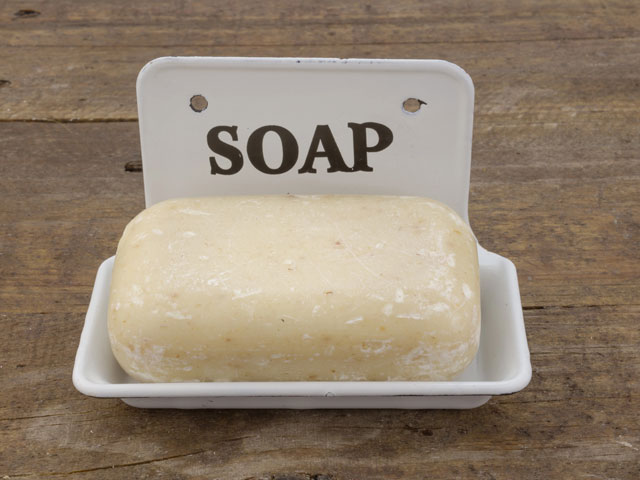Does Soap Expire?

Soap doesn't technically expire, but its effectiveness diminishes over time. Bar soap lasts around 3 to 5 years, liquid soap for 1 to 2 years, glycerin soap about 2 to 3 years, while Castile and other types of antibacterial soap generally last 1 to 2 years and 2 to 3 years, respectively.
The shelf life of soap is influenced by its ingredients, type (bar, liquid, glycerin, etc.), storage conditions, packaging, and usage frequency. Natural ingredients tend to have shorter lifespans compared to synthetic ones.
The Shelf Life of Different Types of Soap
- Bar Soap: Typically lasts 3 to 5 years. Bar soap’s low moisture content helps prevent bacterial growth.
- Liquid Soap: Generally lasts 1 to 2 years. Liquid soaps contain water, making them more susceptible to contamination if not stored properly.
- Glycerin Soap: Lasts about 2 to 3 years. Glycerin can attract moisture, so it’s vital to keep it dry and away from heat.
- Castile Soap: Lasts 1 to 2 years. It's plant-based and can spoil sooner if exposed to light or warmth.
- Antibacterial Soap: Usually lasts 2 to 3 years. The effectiveness of antibacterial agents can decline over time, impacting its ability to kill bacteria.
- Turmeric Soap: Turmeric Soap is an outlier, lasting between 2-4 months in general.
Ingredients
Natural ingredients tend to have shorter shelf lives than synthetic ones. Soaps containing essential oils or natural preservatives may expire faster.
Storage Conditions
High humidity and heat can degrade soap faster. Keeping soap in a cool, dry place helps maintain its quality.
Packaging
Soap in airtight containers lasts longer. Unwrapped soap can absorb moisture and odors from the environment.
Usage
Frequent use of soap can lead to quicker depletion. Avoid using soaps near water sources where they stay wet longer.
How can you tell if soap has expired?
Signs of expired soap include discoloration, cracks, flakes, separation in liquid soaps, mold growth, a faded scent, altered texture, and a lack of lather. These indicators suggest the soap may no longer be effective or safe to use.
Natural soaps typically have a shorter shelf life due to the absence of preservatives. Synthetic soaps may last longer because they often include chemical stabilizers, making them less prone to spoilage.
- Discoloration: A change in color often signals age or ingredient breakdown. New soap typically has a consistent hue.
- Cracks or Flakes: Surface imperfections suggest that the soap has lost moisture or absorbed environmental elements. Healthy soap should maintain a smooth exterior.
- Separation: In liquid soaps, separation of components indicates degradation. A well-formulated liquid soap remains uniformly mixed.
- Mold Growth: Unexpected mold or unusual spots can indicate contamination. Soap should remain without growth when stored properly.
- Faded Scent: A noticeable decrease in fragrance points to diminished quality. Fresh soap delivers pungency, while expired soap may smell stale (if that makes sense).
- Altered Texture: A gritty or slimy feel often hints at spoilage or ingredient separation.
- Absence of Lather: If soap fails to produce a satisfactory lather, its cleansing ability has likely decreased.
Learn about Cold Process soap making.
Can expired soap still be used?
While expired soap may not be harmful, its effectiveness in cleaning may be diminished. It’s best to avoid using soap that shows signs of expiration to ensure hygiene and proper cleansing.
Soap Storage Best Practices
To extend soap's life, store it in a dry place away from direct sunlight, use drainage dishes to prevent sogginess, keep it in airtight containers, and label with purchase dates. Stable temperatures and low humidity are also important.
Keep Soap Dry
Store soap in a dry area to prevent moisture absorption, which can lead to mold or mushy texture.
Use Drainage
Place soap on a dish with good drainage to allow water to escape, reducing the likelihood of sogginess.
Wrap Soap
For unused soap, wrap it in plastic wrap or store it in an airtight container to shield it from humidity and contaminants.
Label and Date
If you make or acquire various soaps, label them with the date of purchase or production to monitor shelf life accurately.
Avoid Direct Sunlight
Keep soap away from direct sunlight, as UV rays can degrade the ingredients and alter the scent.
Temperature Control
Maintain a stable, cool temperature for soap storage. Excessive heat can lead to ingredient breakdown.
Humidity Levels
Excess humidity can encourage mold growth and deteriorate soap quality. Opt for a well-ventilated area.
Air Quality
Store soap away from strong odors or chemicals that might seep into the soap, altering its scent or effectiveness.
Location Choice
Avoid storing soap near sinks or areas prone to splashes, as moisture can compromise its integrity.
Packaging Integrity
Check the packaging regularly. Damaged or compromised packaging may expose soap to detrimental environmental factors.